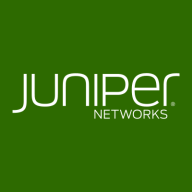

Cisco Wireless and Juniper Mist Wireless Access Points compete in the wireless networking solutions category. Juniper Mist has the upper hand with its advanced AI-driven features and superior network insights.
Features: Cisco Wireless offers integration with Cisco products, security, centralized management, scalability, CleanAir technology, and DNA for frequency management. It ensures seamless roaming and effective support for guest users. Juniper Mist Wireless Access Points focus on AI-driven features, centralized management, strong security, AI-powered troubleshooting, enhanced network insights, and provide excellent traffic visibility with dynamic packet capture.
Room for Improvement: Cisco Wireless could improve its pricing, user interface, and configuration ease. Troubleshooting and integration with third-party products also need enhancement. Juniper Mist Wireless Access Points could benefit from a more competitive pricing model, improved AI capabilities for interference protection, stronger security features, and better support services with enhanced user-friendliness.
Ease of Deployment and Customer Service: Cisco Wireless is primarily deployed on-premise, offering strong customer service and technical support, though regional variations exist. Juniper Mist Wireless Access Points effectively use cloud deployment with flexible public, private, and hybrid cloud options and provide high customer satisfaction with reliable technical support, praised for its immediate assistance and knowledgeable representatives.
Pricing and ROI: Cisco Wireless is expensive with structured licensing and additional costs for features and support, yet considered a worthwhile investment due to its stability and reliability. Juniper Mist Wireless Access Points are costly but offer valuable features and ROI through enhanced productivity. Improved pricing could broaden their user base. Both solutions deliver clear returns in connectivity quality and network reliability.
The Cisco forum also has good questions that help resolve problems and issues.
The technical support from Cisco is of high quality.
The technical support from Cisco is good.
My impression of Juniper support is generally good, and I would rate it probably a 9.
Technical support is very good.
The cloud, which operates on Amazon Web Services (AWS), can support unlimited access points.
It's built for larger environments.
We rarely have downtime.
We would prefer if we could increase the controller to a 10 gig interface because we want to connect our controller to a 10 gig interface.
Sometimes, integration with other Cisco products requires manual intervention for tasks such as firmware upgrades, which should be automated.
In the long term, there could be a cost reduction because it does not require much maintenance.
Juniper products are still coming to market, HP offers its own access point range, which competes with Juniper's premium Mist access points intended for enterprise customers.
The reporting logs require improvement in terms of clarity.
I suggest that the AI tool in the Juniper Mist Wireless Access Points needs to be a little bit more ChatGPT-like, allowing easier communication in normal language instead of requiring specific prompts.
Cisco generally is expensive.
The price of Cisco Wireless is pretty expensive.
Cisco has provided significant discounts for large-scale deployments.
Regarding pricing, Juniper's cost rates as a seven on a scale where one represents a high price and ten represents a low price.
The price is very high, which is why not all enterprises can purchase this product.
Juniper Mist is cheaper than Meraki, placing it in the middle of the pack.
The advantages of Cisco Wireless include helping me aggregate all the access points, managing one point connection for my users easily, controlling rogues, and addressing hotspots effectively.
If one network fails, there is a link between different access points, which ensures network continuity.
When I install it, I can forget about it because there is no need for ongoing maintenance, and no other problems occur.
I have gained valuable insights from the Mist Cloud's analytics and network insights, as it tells you a lot of things, including details about Microsoft Teams calls, identifying which calls were good or bad, and correlating that to the client's signal and which access point the client was connected to at the time.
From my perspective, the Juniper reporting logs are clear and provide necessary data, which supports better management and diagnosis.
It's a cloud solution with Mist, which helps troubleshoot and provides visibility to look at different access points.
| Product | Market Share (%) |
|---|---|
| Cisco Wireless | 11.0% |
| Juniper Mist Wireless Access Points | 5.6% |
| Other | 83.4% |


| Company Size | Count |
|---|---|
| Small Business | 76 |
| Midsize Enterprise | 41 |
| Large Enterprise | 74 |
| Company Size | Count |
|---|---|
| Small Business | 11 |
| Midsize Enterprise | 4 |
| Large Enterprise | 8 |
Cisco Wireless is a comprehensive suite of wireless solutions designed to deliver secure, high-performance connectivity for enterprises of all sizes. Offering a range of access points, controllers, and advanced management tools, Cisco Wireless ensures seamless and reliable network access, enhancing mobility and productivity.
Cisco Wireless solutions provide robust, scalable wireless networks capable of supporting high-density environments and diverse applications. With features such as seamless roaming, advanced security protocols, and detailed analytics, Cisco Wireless addresses the needs of modern businesses. The solutions include the Cisco Catalyst and Aironet series access points, wireless LAN controllers, and the Cisco DNA Center for centralized management and automation.
What are the key features of Cisco Wireless?
What benefits should users look for in reviews when evaluating Cisco Wireless?
Cisco Wireless solutions are implemented across various industries, including healthcare, education, retail, and manufacturing. In healthcare, they support critical applications like patient monitoring and electronic health records. Educational institutions use Cisco Wireless to provide reliable internet access for students and staff. Retailers benefit from enhanced customer experiences through in-store connectivity, while manufacturers use wireless networks to improve operational efficiency and automation.
Pricing and licensing for Cisco Wireless solutions are typically based on the scale of deployment and specific product selections. Cisco offers various support plans, including 24/7 customer service, technical support, and access to software updates and patches.
In summary, Cisco Wireless provides robust, scalable wireless networking solutions that enhance connectivity, security, and management for diverse enterprise environments.
Juniper Wireless Access Points work in conjunction with Juniper Mist Cloud Services and Mist AI to deliver premier wireless access capabilities. The Juniper Mist Edge extends microservices to the campus to bring agility and scale while enabling new applications at the edge.
We monitor all Wireless LAN reviews to prevent fraudulent reviews and keep review quality high. We do not post reviews by company employees or direct competitors. We validate each review for authenticity via cross-reference with LinkedIn, and personal follow-up with the reviewer when necessary.